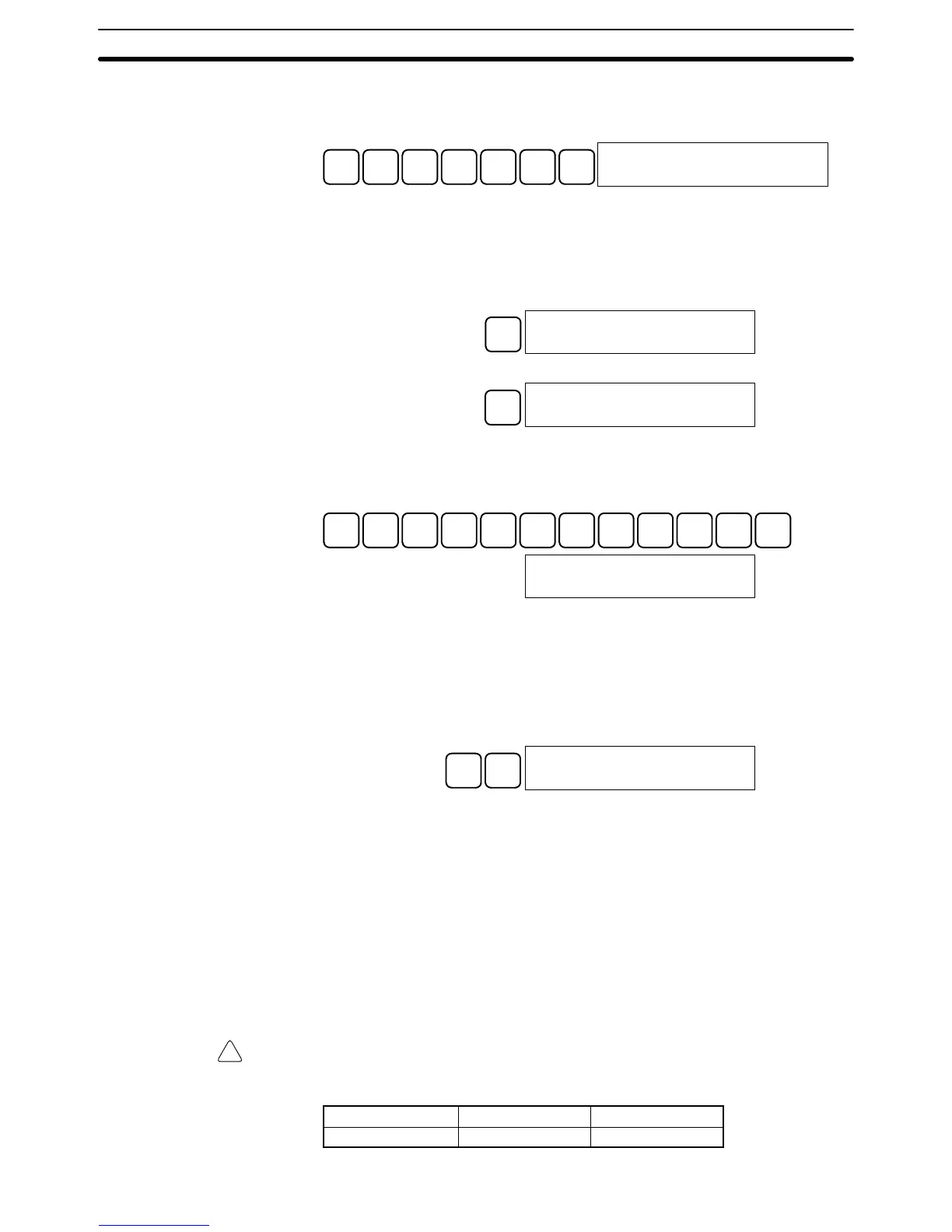!
3-6SectionProgramming Console Operations
105
To return to the I/O monitor, multiple address monitor, or 3-word data modifi-
cation display, either press the SHIFT and TR Keys, or else press the CLR
Key.
SET
D
3
C
2 7 6 8
WRITE
cL01
-32768
Note If an erroneous input is made, press the CLR Key to restore the status
prior to the input. Then enter the correct input. If an input is made out-
side of the permissible range, a buzzer will sound.
• Double-length Change
1. The PV is displayed in double length by decimal-with-sign monitoring.
EXT
cL02 cL01
-0268402688
2. Press the CHG Key to begin decimal data modification.
CHG
PRES VAL?
cL02-0268402688
3. Input the new PV and press the WRITE Key to change the PV. The operation
will end and the double length display will return when the WRITE Key is
pressed. The PV can be set within a range from –2,147,483,648 to
2,147,483,647.
SET
B
1
C
2
D
3
E
4
F
5 6 7 8 9
A
0
WRITE
cL02 cL01
+1234567890
Note If an erroneous input is made, press the CLR Key to restore the status
prior to the input. Then enter the correct input. If an input is made out-
side of the permissible range, a buzzer will sound.
4. When the decimal monitoring with sign has been completed, the I/O moni-
tor, multiple address monitoring, or 3-word data modification display is
restored.
SHIFT TR
cL01 cL0200001
0202 4996^ OFF
Note The I/O monitor, multiple address monitoring, or 3-word data modification dis-
play can also be restored by means of the CLR Key.
3-6-24 Decimal Data Modification Without Sign
This operation is used to change the decimal value of a word, within a range
of 0 to 65,535 (without sign). It is converted automatically to hexadecimal. In
addition, the data from 2 consecutive words can be changed all together
(double-length change).
The operation can be used during decimal-without-sign monitoring.
Words SR 253 to SR 255 cannot be changed.
Caution This operation cannot be used with CQM1-CPU11-E and CQM1-CPU21-E CPU
Units.
RUN MONITOR PROGRAM
No OK OK
